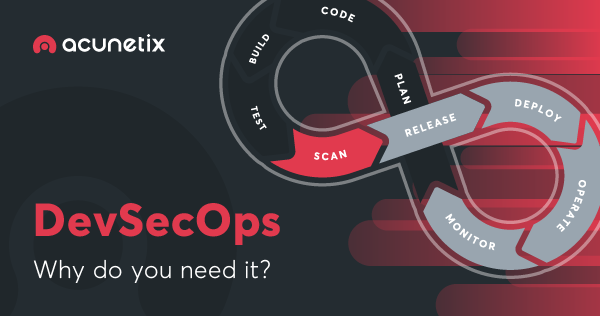COVID-19 and the subsequent global recession have thrown a wrench into IT spending. Many enterprises have placed new purchases on hold. Gartner recently projected that global spending on IT would drop 8% overall this year — and yet dollars allocated to cloud-based services are still expected to rise by approximately 19 percent, bucking that downward trend.
Underscoring the relative health of the cloud market, IDC reported that all growth in traditional tech spending will be driven by four platforms over the next five years: cloud, mobile, social and big data/analytics. Their 2020-2023 forecast states that traditional software continues to represent a major contribution to productivity, while investments in mobile and cloud hardware have created new platforms which will enable the rapid deployment of new software tools and applications.
With entire workforces suddenly going remote all over the world, there certainly are a number of specific business problems that need to be addressed, and many of the big issues involve VPNs.
Assault on VPNs
Millions of employees are working from home, and they all have to securely access their corporate networks. The vast majority of enterprises still rely on on-premises servers to some degree (estimates range from 60% to 98%), therefore VPNs play a vital role in enabling that employee connection to the network. This comes at a cost, though: bandwidth is gobbled up, slowing network performance — sometimes to a crippling level — and this has repercussions.
Maintenance of the thousands of machines and devices connected to the network gets sacrificed. The deployment of software, updates and patches simply doesn’t happen with the same regularity as when everyone works on-site. One reason for this is that content distribution (patches, applications and other updates) can take up much-needed bandwidth, and as a result, system hygiene gets sacrificed for the sake of keeping employees productive.
Putting off endpoint management, however, exposes corporate networks to enormous risks. Bad actors are well aware that endpoints are not being maintained at the same level as pre-pandemic, and they are more than willing to take advantage. Recent stats show that the volume of cyberattacks today is pretty staggering — much higher than prior to COVID-19.
Get thee to the cloud: Acceleration of modern device management
Because of bandwidth concerns, the pressure to trim costs, and the need to maintain machines in new ways, many enterprises are accelerating their move to the cloud. The cloud offers a lot of advantages for distributed workforces while also reducing costs. But digital transformation and the move to modern device management can’t happen overnight.
Enterprises have invested too much time, money, physical space and human resources to just walk away. Not to mention, on-premises environments have been highly reliable. Physical servers are one of the few things IT teams can count on to just work as intended these days.
Hybrid environments offer a happy medium. With the latest technology, enterprises can begin migrating to the cloud and adapt to changing conditions, meeting the needs of distributed teams. They can also save some money in the process. At the same time, they don’t have to completely abandon their tried-and-true servers.
Solving specific business problems: Content distribution to keep systems running
But what about those “specific business problems,” such as endpoint management and content distribution? Prior to COVID-19, this had been one of the biggest hurdles to digital transformation. It was not possible to distribute software and updates at scale without negatively impacting business processes and without excessive cost.
The issue escalated with the shift to remote work. Fortunately, technology providers have responded, developing solutions that leverage secure and efficient delivery mechanisms, such as peer-to-peer content distribution, that can work in the cloud. Even in legacy environments, vast improvements have been made to reduce bandwidth consumption.
These solutions allow enterprises to transition from a traditional on-premises infrastructure to the cloud and modern device management at their own speed, making their company more agile and resilient to the numerous risks they encounter today. Breakthrough technologies also support multiple system management platforms and help guarantee endpoints stay secure and updated even if corporate networks go down – something that, given the world we live in today, is a very real possibility.
Disaster averted
Companies like Garmin and organizations such as the University of California San Francisco joined the unwitting victims of ransomware attacks in recent months. Their systems were seized, only to be released upon payment of millions of dollars.
While there is the obvious hard cost involved, there are severe operational costs as well — employees that can’t get on the network to do their jobs, systems must be scanned, updated and remediated to ensure the network isn’t further compromised, etc. A lot has to happen within a short period of time in the wake of a cyberattack to get people back to work as quickly and safely as possible.
Fortunately, with modern cloud-based content distribution solutions, all that is needed for systems to stay up is electricity and an internet connection. Massive redundancy is being built into the design of products to provide extreme resilience and help ensure business continuity in case part or all of the corporate network goes down.
The newest highly scalable, cloud-enabled content distribution options enable integration with products like Azure CDN and Azure Storage and also provide a single agent for migration to modern device management. With features like cloud integration, internet P2P, and predictive bandwidth harvesting, enterprises can leverage a massive amount of bandwidth from the internet to manage endpoints and ensure they always stay updated and secure.
Given these new developments precipitated and accelerated by COVID-19, as well as the clear, essential business problem these solutions address, expect to see movement and growth in the cloud sector. Expect to see an acceleration of modern device management, and despite IT spending cuts, expect to see a better, more secure and reliable, cost efficient, operationally efficient enterprise in the days to come.













